Watch v GPS v Laser - Which Is Best For You?
We analyse the pros and cons of each distance measuring device so you can choose the one that suits your needs the best
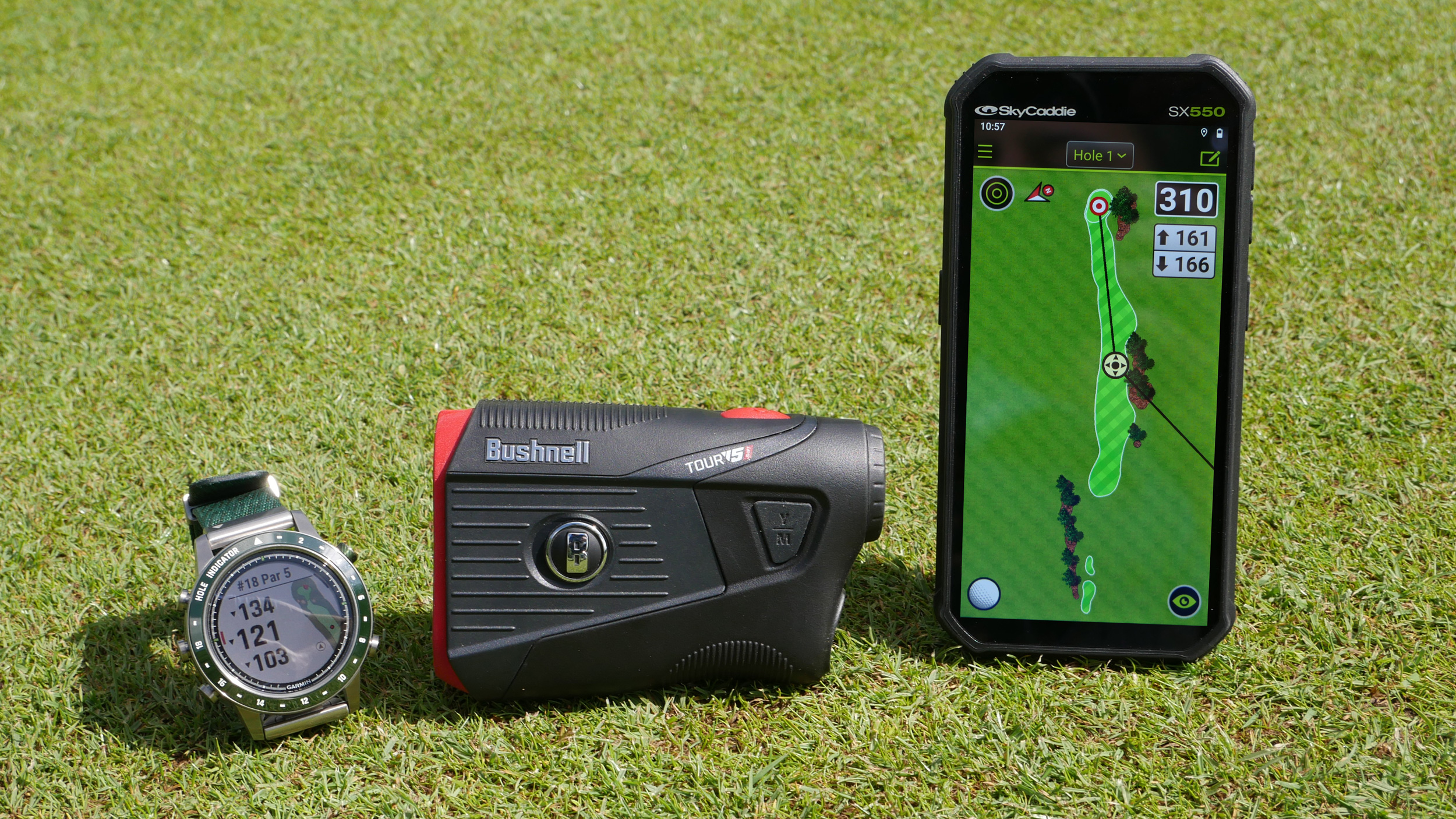

Watch v GPS v Laser - Which Is Best For You?
Watch Joel Tadman and Neil Tappin discuss the pros and cons of of each type of device
If you’re serious about improving your game and shooting lower scores, you’re going to need to invest in some sort of distance measuring device (DMD). They come in three main forms - a laser rangefinder, GPS watch or handheld GPS and they each offer something a little bit different to cater for the various needs golfers have.
Assuming you know roughly how far you hit each club in your bag, a reliable DMD will not only enhance your strategy but will reward you for hitting good golf shots and help keep the big numbers off your scorecard. But given the choice available, it can be difficult to know which type of device best meets your demands in terms of features, ease of use and budget, so we’ve taken a deeper dive into each type of device to help you understand what they offer and which one is best for your golf game.
Golf GPS Watch
This type of distance measuring device is becoming increasingly popular among golfers of all abilities, mainly because of the added convenience they offer. All the information you’ll ever need is right there on your wrist to quickly glance at and the best golf watches are slim and lightweight, so you really don’t notice the fact that you’re wearing one and nor do they interfere with your swing in any way.
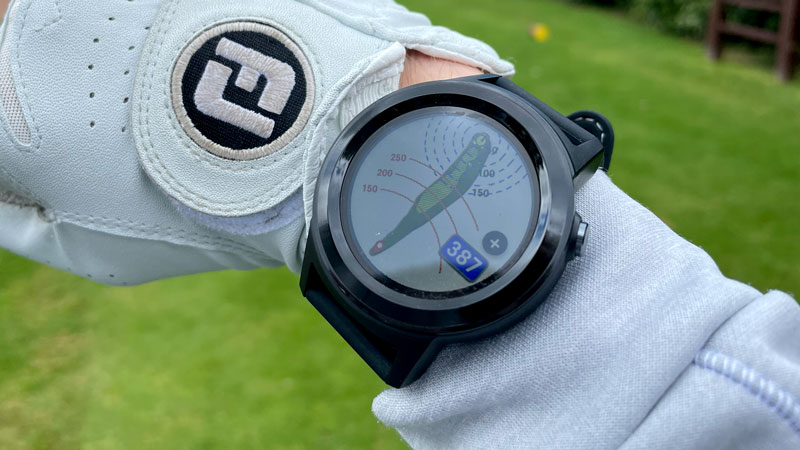
They provide different levels of features depending on how much money you are willing to invest but even the most basic, cost effective GPS watches will do enough to satisfy the needs of most abilities of player by providing front, middle and back distances, distances to hazards and lay ups and in some cases the option to move the pin position on the green for a more precise yardage to the flag. Other features usually include a touch screen display, the ability to keep score and, of course, telling the time so you can wear it off the course if you want to!
Spend a bit more and you can get full color hole maps with a moveable pointer to plot your way along and even functions like shot tracking for those that want to get the most out of their device, like on the Shot Scope V3 GPS. But for most golfers, a basic golf GPS watch will be enough to ascertain the distances you need to choose the appropriate club for the shot in hand while keeping the cost down so you can spend more heavily in other areas of your bag.
Laser Rangefinder
Laser rangefinders are usually the preferred option among better players because they provide exact distances to the flag and other points of interest in a speedy fashion. The battery life is also much longer, so you don’t need to worry about charging them after every round and they usually come with a decent level of functionality to assist in different situations during the course of a round.
Get the Golf Monthly Newsletter
Subscribe to the Golf Monthly newsletter to stay up to date with all the latest tour news, equipment news, reviews, head-to-heads and buyer’s guides from our team of experienced experts.
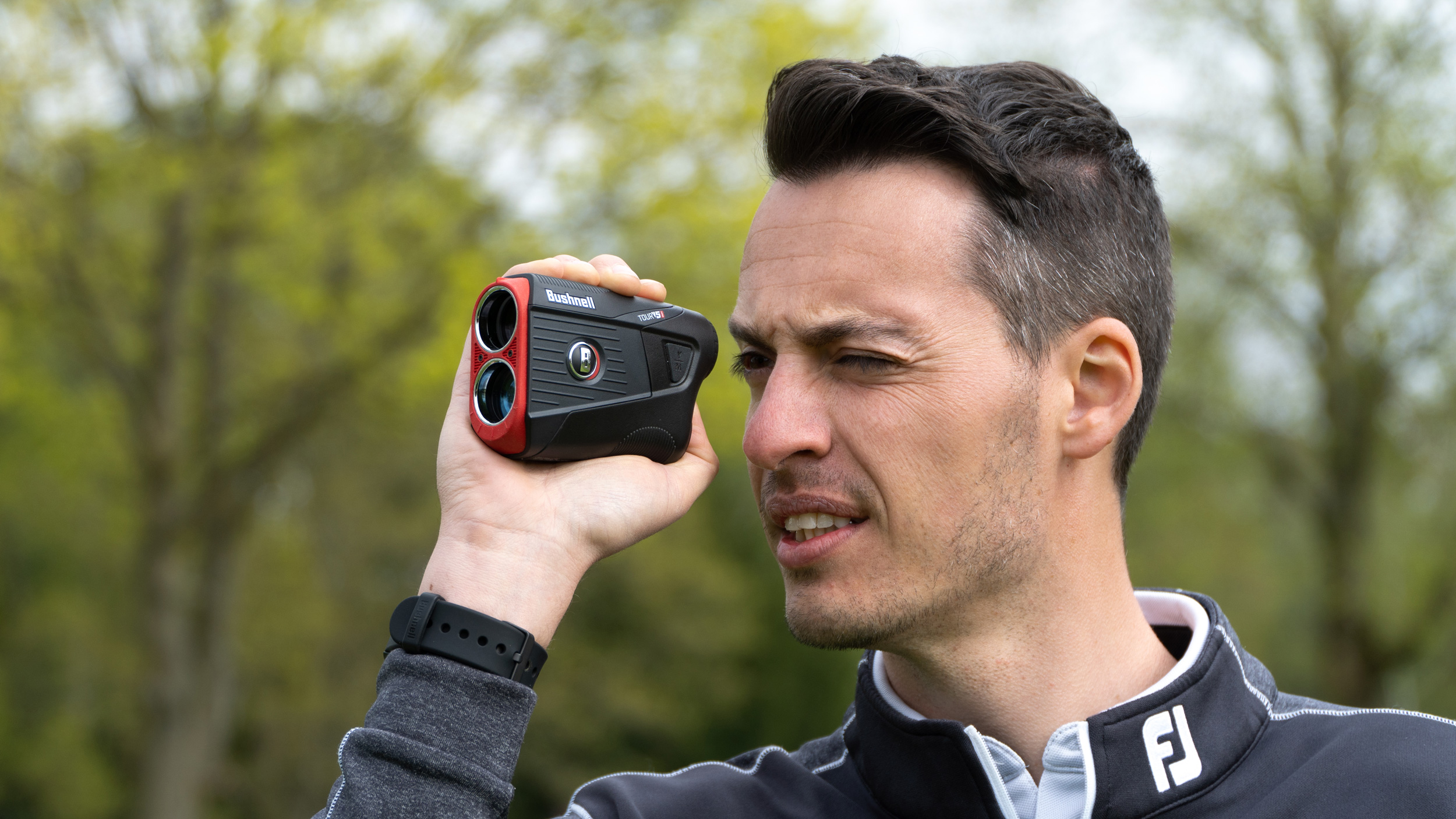
The best golf laser rangefinders come with Slope functionality, which takes into account changes in elevation to provide a more accurate yardage. This feature is not legal for competition use, however, so be sure to switch it off if you’re playing in a club medal, stableford or match.
Related: 8 Ways To Use Your Laser Rangefinder
Laser rangefinders will usually provide extra reassurance that the flag has been picked out from a busy background by vibrating or having a flashing graphic in the display. In general, laser rangefinders tend to be one of the more expensive types of distance measuring device but the speed and accuracy they provide is arguably well worth the investment if you’re serious about your game and play to a decent standard.
Handheld GPS
A golf GPS device doesn’t need to be just worn on your wrist. It can be clipped to your bag or placed in your pocket and often, these types of device provide extra detail versus a GPS watch. This usually comes in the form of a larger screen that displays full color hole maps, like on the SkyCaddie SX550 pictured below, and offers extra features like different display modes and shot measurement capability. But there are some more basic handheld GPS devices that provide added convenience without skimping on functionality.
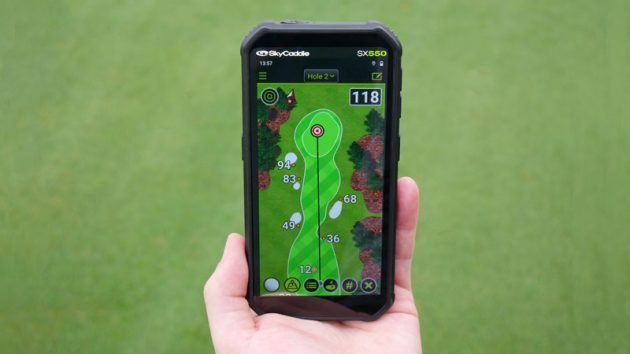
A compact, more entry-level GPS device is a great way of getting the distances you need on the course without breaking the bank. The battery life will normally last for multiple rounds and some can even attach magnetically to a buggy frame so the screen is always there when you need it at eye level.
What Do I Need To Consider?
- Your routine
A glance at a watch is much quicker than taking a device out of its case, so weigh up if extra detail or less disruption is most important to you. - Your course
If your course has lots of doglegs, blind tee shots, or you play at other clubs in matches or socially, then you might want the extra information a GPS offers over a laser. - Added extras
The larger GPS units often include scorecard and stat tracking capabilities, while some devices measure shots or steps taken, so bear all this in mind. - Battery power
Laser rangefinders run on powerful batteries that are easily replaced every six months to a year, while GPS devices normally need charging via a USB, so consider which would be easiest for you on a week-to-week basis.

Joel has worked in the golf industry for over 15 years covering both instruction and more recently equipment. He now oversees all equipment and video content at Golf Monthly, managing a team of talented and passionate writers and presenters in delivering the most thorough and accurate reviews, buying advice, comparisons and deals to help the reader or viewer find exactly what they are looking for.
One of his career highlights came when covering the 2012 Masters he got to play the sacred Augusta National course on the Monday after the tournament concluded, shooting a respectable 86 with just one par and four birdies. To date, his best ever round of golf is a 5-under 67 back in 2011. He currently plays his golf at Burghley Park Golf Club in Stamford, Lincs, with a handicap index of 3.1.
Joel's current What's In The Bag?
Driver: Titleist GT3, 9°, Fujikura Ventus Black 6 S shaft.
Fairway wood: Titleist TSR3, 15°
Hybrid: Titleist TSi2, 18°
Irons: Titleist T150, 4-PW
Wedges: Titleist Vokey SM10, 50°, 54° and 58°
Putter: LAB Golf DF3
Ball: 2025 Titleist Pro V1x
-
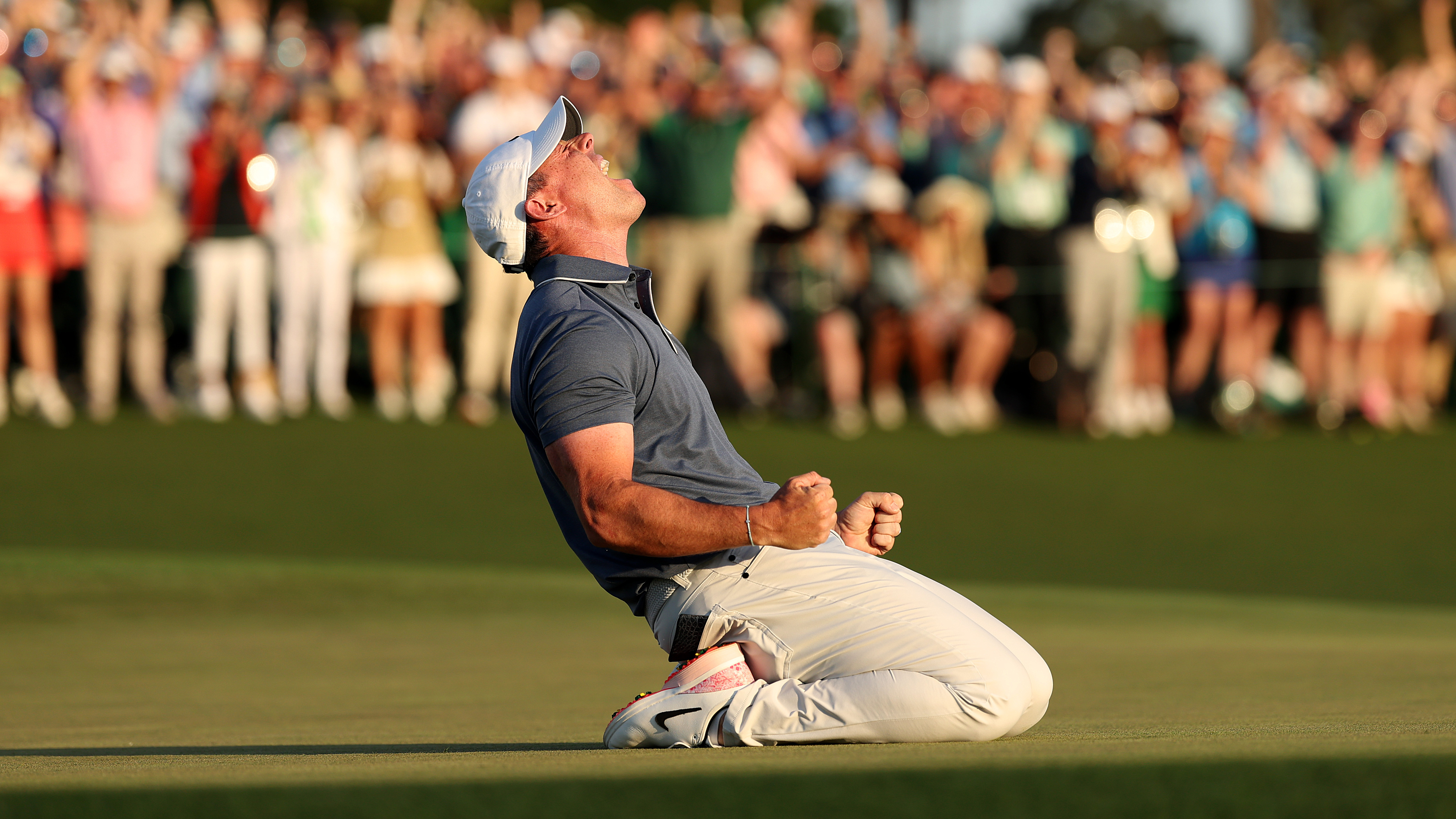 Rory McIlroy Wins The Masters In Playoff To Complete Career Grand Slam
Rory McIlroy Wins The Masters In Playoff To Complete Career Grand SlamThe Northern Irishman battled past Ryder Cup teammate, Justin Rose to finally seal his first Masters title and become the sixth man to win all four men's Majors
By Jonny Leighfield Published
-
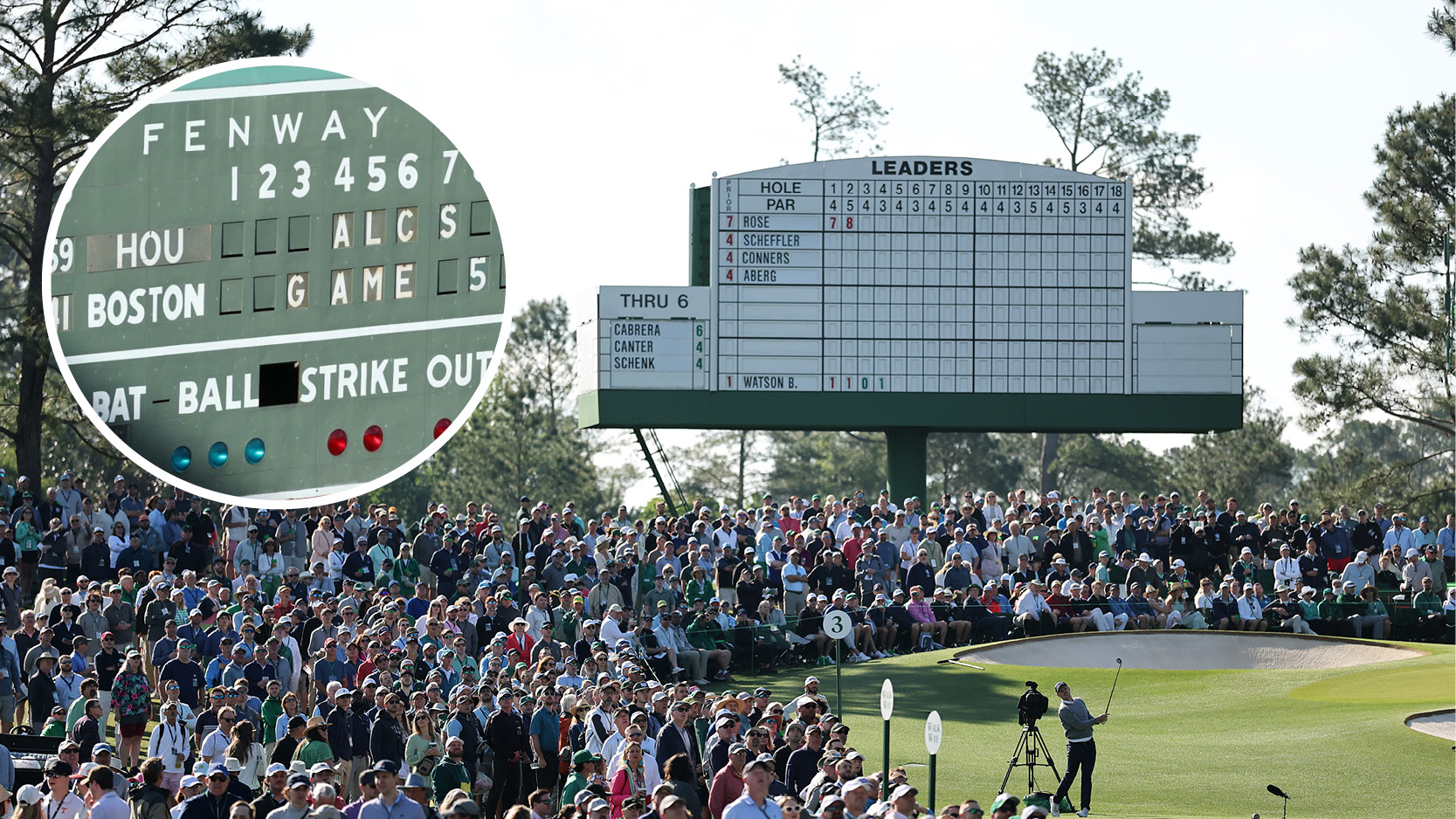 Did You Know The Masters Leaderboard Was Inspired By Fenway Park?
Did You Know The Masters Leaderboard Was Inspired By Fenway Park?The Masters leaderboards are an iconic and historic part of the Augusta National Major, but did you know about its origins and how it operates today?
By Matt Cradock Published